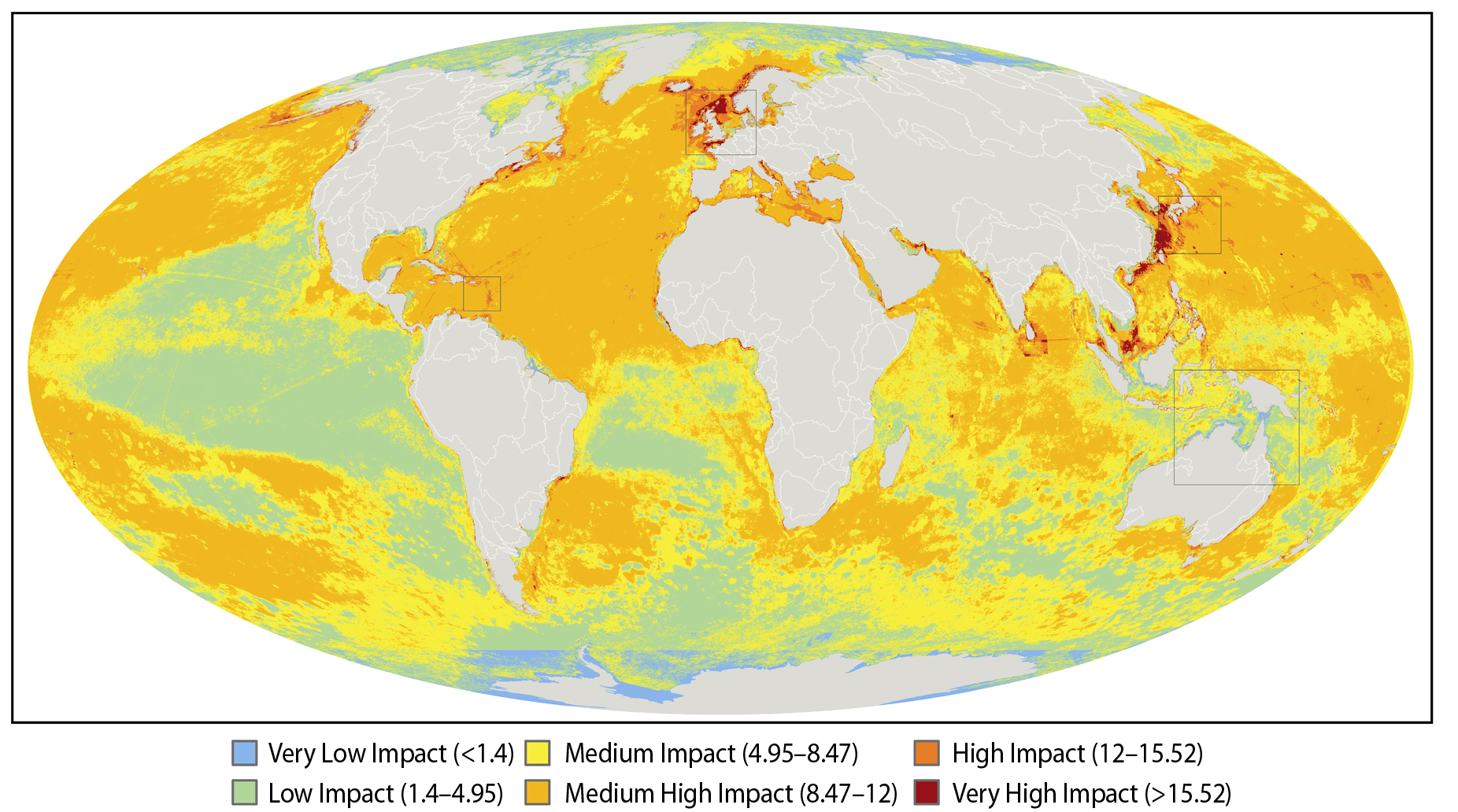A new study out this week has revealed that there is literally no-where to hide when it comes to the damaging affects we are having on the seas and oceans, and that over forty percent of the world's marine ecosystems are suffering from very high levels of threat.
![A global map of the overall impact that 17 different human activities are having on marine ecosystems. Insets show three of the most heavily impacted areas in the world, and one of the least impacted areas.</p><p><div style="float: left;" id="block-inject-1" class="block-inject block-inject-1"><section id="block-block-25" class="block block-block clearfix"><div style="width: 160px; margin: 15px;"><script async src="//pagead2.googlesyndication.com/pagead/js/adsbygoogle.js"></script>
<ins class="adsbygoogle" style="display:inline-block;width:160px;height:600px" data-ad-client="ca-pub-1388850083651616" data-ad-slot="3413667069"></ins>
<script>
(adsbygoogle = window.adsbygoogle || []).push({});
</script>
</div></section></div><p>Image courtesy of B.S Halpern / Science (c) B.S Halpern Human Impact on the Oceans](/sites/default/files/media/halpern1HR.jpg) A team of 19 international scientists have drawn up the first ever map of the oceans showing where we are affecting them and by how much.
A team of 19 international scientists have drawn up the first ever map of the oceans showing where we are affecting them and by how much.
The study was presented this week at the AAAS in the United States - we'll be hearing more news from that meeting in a few minutes from Chris.
To gauge the global impact of human activities on the ocean the team looked at lots of different threats, including over-fishing, pollution, invasive species and global warming. They put together detailed information about the distribution of these threats across the water bodies of the world, and then added the affects of all these threats together, so that every square kilometre of the oceans was assigned an impact rating, ranging from low to high impact.
If you take a look at the map you'll see that a lot of the oceans are coloured in yellow and orange - these are areas with a medium to high level of impact. There is quite a bit of green which are areas with a relatively low impact going on, and just a few tiny patches that you can hardly see of blue, which are areas that suffer from only a very low impact, and these are clustered around the north and south poles. What are obvious are the patches of bright red, which are the really bad zones where multiple threats are having a great impact - these include the shores of the British Isles in the north sea, the Mediterranean, the Caribbean on the eastern seaboard of the United States, as well as in Asia and the Persian Gulf.
What this map does, apart from get us rather depressed about the state of the oceans, is hopefully something more positive - which is to give us see a bigger picture of what's going on and hopefully to allow us to better plan how best to protect the oceans from the ongoing impacts of the world's growing human population.

- Previous Science of Sandcastles
- Next Secrets of the flying lemurs unveiled










Comments
Add a comment